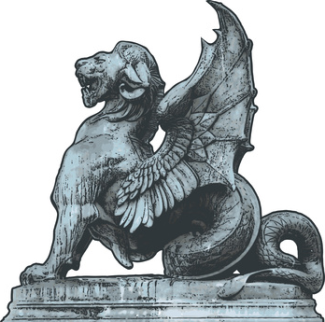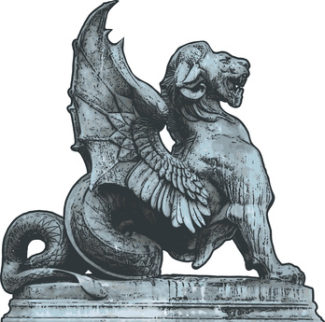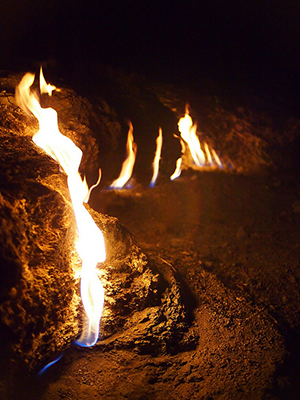



The Chimera was, according to Greek mythology, a monstrous fire-breathing hybrid creature of Lycia in Asia Minor, composed of the parts of more than one animal. Usually depicted as a lion, with the head of a goat arising from its back, and a tail that might end with a snake's head, the Chimera was one of the offspring of Typhon and Echidna and a sibling of such monsters as Cerberus and the Lernaean Hydra.
The term chimera has come to describe any mythical or fictional animal with parts taken from various animals, or to describe anything composed of very disparate parts, or perceived as wildly imaginative, implausible, or dazzling. It now exists liminally in various works of popular culture; chimeras of differing description can be found in contemporary works of fantasy and science fiction.
The myths of the Chimera may be found in the Bibliotheca of Pseudo-Apollodorus (book 1), the Iliad (book 16) by Homer, the Fabulae 57 and 151 by Hyginus, the Metamorphoses (book VI 339 by Ovid; IX 648), and the Theogony 319ff by Hesiod. Virgil, in the Aeneid (book 5) employs Chimaera for the name of gigantic ship of Gyas in the ship-race, with possible allegorical significance in contemporary Roman politics.


Epic Battles
Pebble mosaic depicting Bellerophon killing the Chimera (Rhodes Archaeological Museum)

Legendary Origins
Neo-Hittite Chimera from Karkemish (Museum of Anatolian Civilizations)

Pottery Depictions
The Chimera on a red-figure Apulian plate, c. 350–340 BC (Musee du Louvre)

Beasts of Myth
Gold reel, possibly an ear-stud, with winged Pegasus and the Chimera (Musee du Louvre)

Pliny the Elder cited Ctesias and quoted Photius identifying the Chimera with an area of permanent gas vents that still may be found by hikers on the Lycian Way in southwest Turkey. Called in Turkish, Yanartas (flaming rock), the area contains of some two dozen vents in the ground, grouped in two patches on the hillside above the Temple of Hephaestus approximately 3 km north of Cirali, near ancient Olympos, in Lycia. The vents emit burning methane thought to be of metamorphic origin. The fires of these were landmarks in ancient times and used for navigation by sailors.
The Neo-Hittite Chimera from Carchemish, dated to 850–750 BC, which is now housed in the Museum of Anatolian Civilizations is believed to be a basis for the Greek legend. It differs, however, from the Greek version in that a winged body of a lioness also has a human head rising from her shoulders.
Homer's brief description in the Iliad[2] is the earliest surviving literary reference: "a thing of immortal make, not human, lion-fronted and snake behind, a goat in the middle,[3] and snorting out the breath of the terrible flame of bright fire".[4] Elsewhere in the Iliad, Homer attributes the rearing of Chimera to Amisodorus.[5] Hesiod's Theogony follows the Homeric description: he makes the Chimera the issue of Echidna: "She was the mother of Chimaera who breathed raging fire, a creature fearful, great, swift-footed and strong, who had three heads, one of a grim-eyed lion; in her hinderpart, a dragon; and in her middle, a goat, breathing forth a fearful blast of blazing fire. Her did Pegasus and noble Bellerophon slay"[6] The author of the Bibliotheca concurs:[7] descriptions agree that she breathed fire. The Chimera is generally considered to have been female (see the quotation from Hesiod above) despite the mane adorning her head, the inclusion of a close mane often was depicted on lionesses, but the ears always were visible (that does not occur with depictions of male lions). Sighting the Chimera was an omen of storms, shipwrecks, and natural disasters (particularly volcanoes).
credits